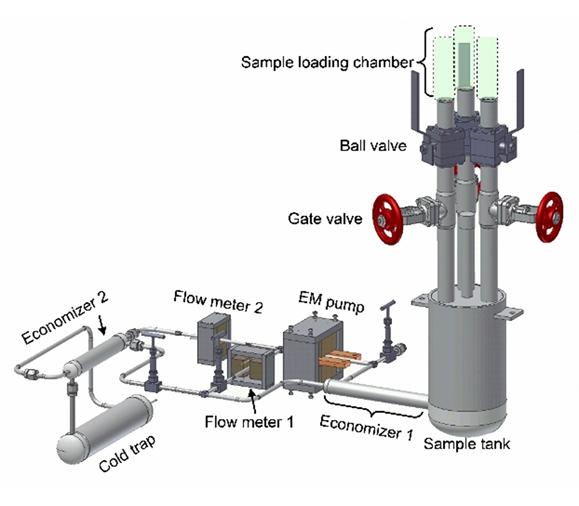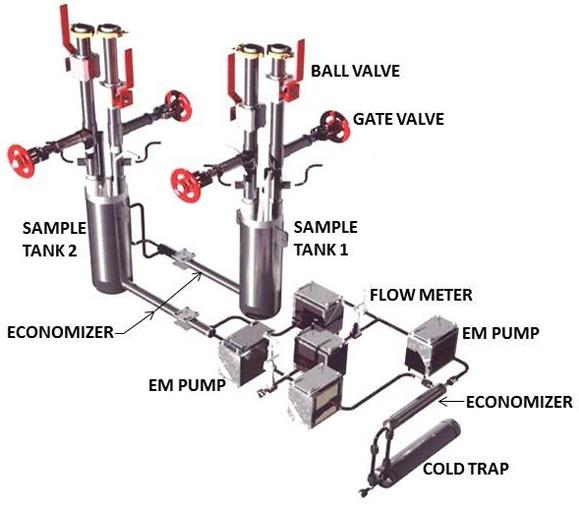The ALEX facility safely houses alkali metal systems in its two large metal (C-1 and C-2) and one small containment (SC-1). The containment systems connect to a scrubber that can handle potentially large amounts of caustic smoke that might be generated in an alkali metal leak or fire, while confining the smoke inside the containments, and minimizing the effects of such an event to external environments.
The ALEX staff have expertise in liquid metal technologies based on their long experience with liquid metals. The Argonne National Laboratory Fire Department staff are specially trained to deal with alkali metal fires—a unique, on-site, asset. The ALEX facility is located in the west end of building 370, a large high bay and general-purpose laboratory building.
Early Days
The ALEX facility was constructed in late 1984. ALEX was originally related to Magneto-Hydro-Dynamics (MHD) studies in fusion reactor design. The basic MHD research used a 400-liter, 4-inch piping loop initially filled with NaK and later converted to Li. The fusion-related work has been inactive since calendar year 1996 and the 400-liter loop has been decommissioned.
Lithium Systems
Liquid lithium is generating interest as a method to remove heat from high-energy beams incident on charge strippers or targets for large particle accelerators, systems that are expected to come on line soon. The strong safety systems at ALEX and deep base of experience in the NS&E staff in alkali metals and liquid metal technology prompted the Argonne Physics Division to request NS&E staff to assist in developing liquid lithium systems for high power accelerator applications. Now, the ALEX facility includes a windowless liquid lithium target system and a windowless liquid lithium stripper system that have been tested.
Sodium Systems
ALEX’s active liquid metal work includes liquid sodium related technologies for nuclear reactor applications. To eliminate potential sodium-water reactions that may occur from a secondary system leak, sodium-cooled fast reactor application design proposals include a compact diffusion-bonded heat exchanger (HX), with channels of a few millimeters, as an alternative. Reliable data on how large sodium cooling channels must be to avoid plugging by impurities over a reasonable time interval are lacking. Understanding of the effects of the freezing and melting of sodium on the structure of such a HX is also lacking. Again, the broad alkali metal handling experience of the NS&E staff, the foundation of safety systems, and availability of liquid metal technologies make ALEX the ideal site for a small scale sodium plugging loop and sodium freeze/melt apparatus—which have since been constructed at the facility.
Materials Testing Loops
Two forced-convection sodium loops have been constructed to test advanced structural materials in sodium environments at high temperatures up to ∼700°C. Each loop contains specimen exposure vessel(s) and a cold trap with EM pump(s) and flow meter(s) to circulate the sodium and maintain the oxygen level in the sodium low (∼ppm range) as well as to replenish the sodium in the specimen exposure vessel(s). These vessels provide high temperature sodium environments for the compatibility testing of advanced materials.

